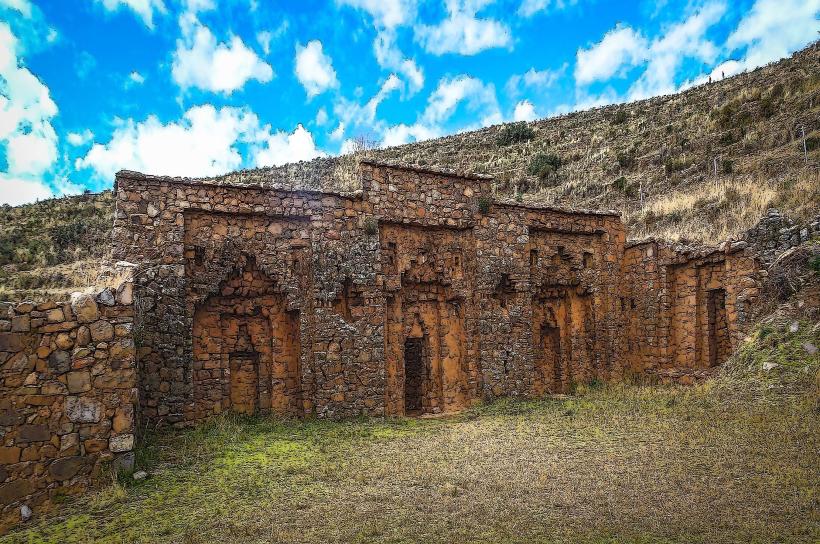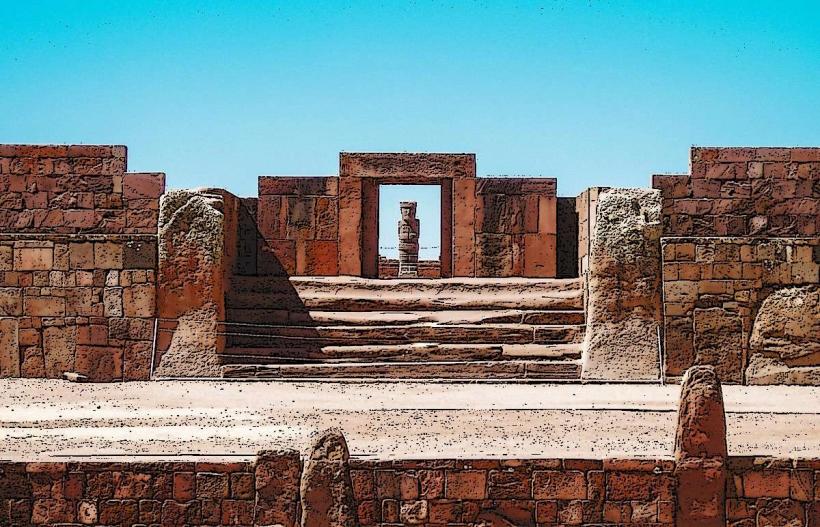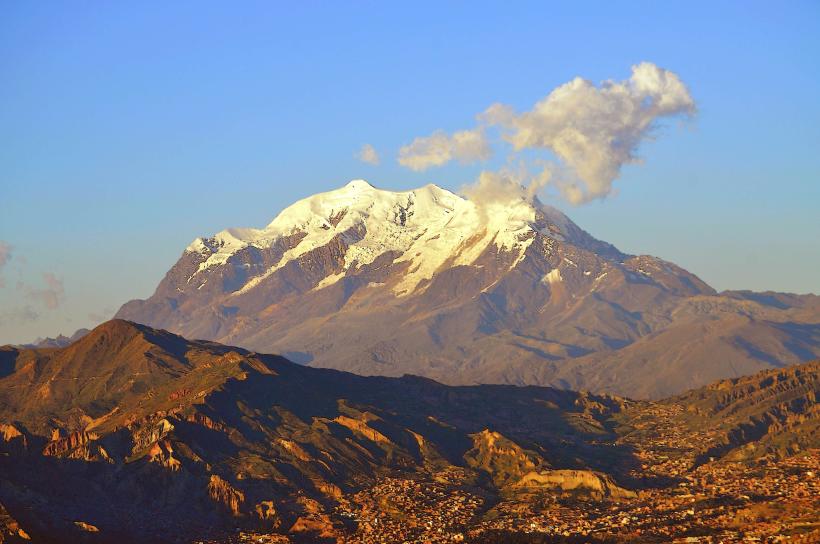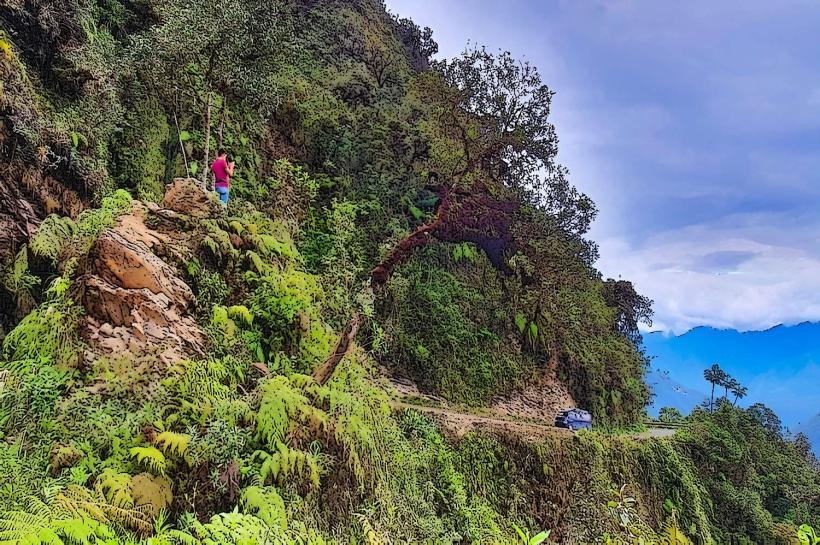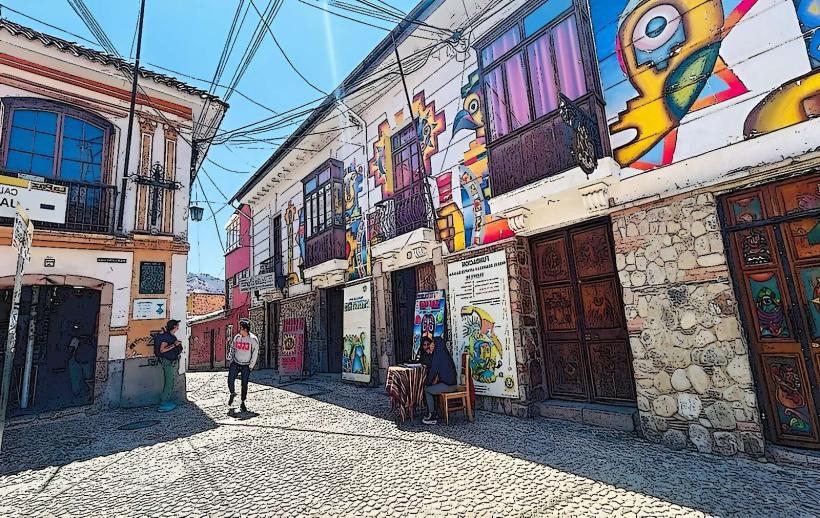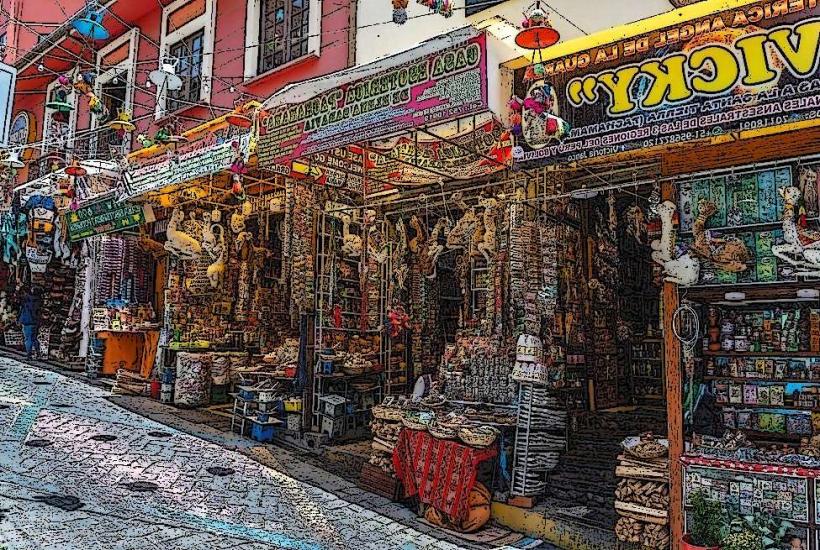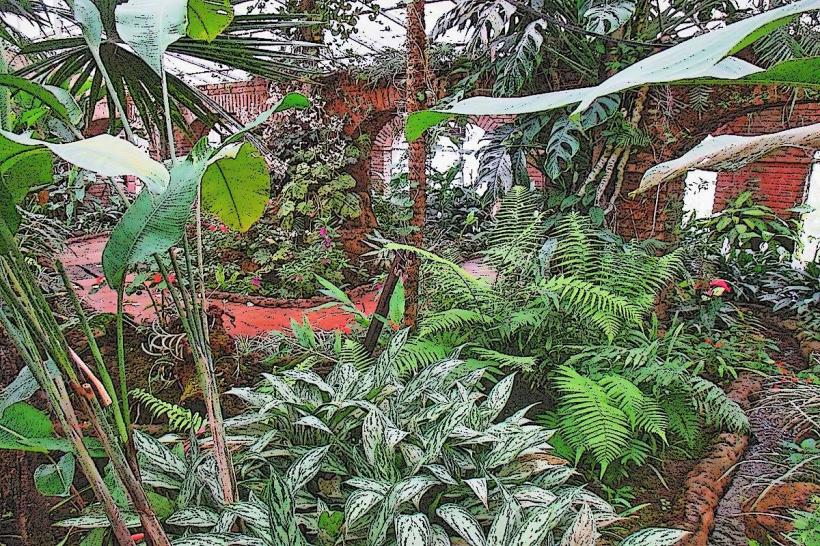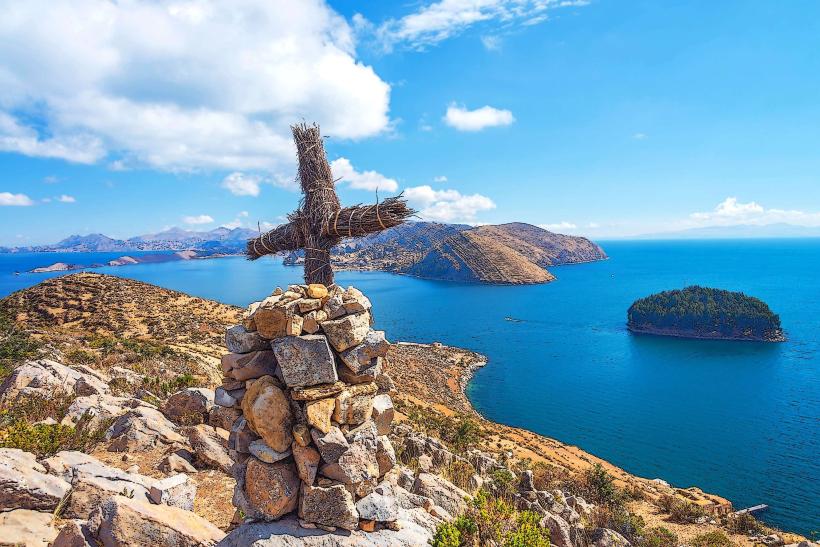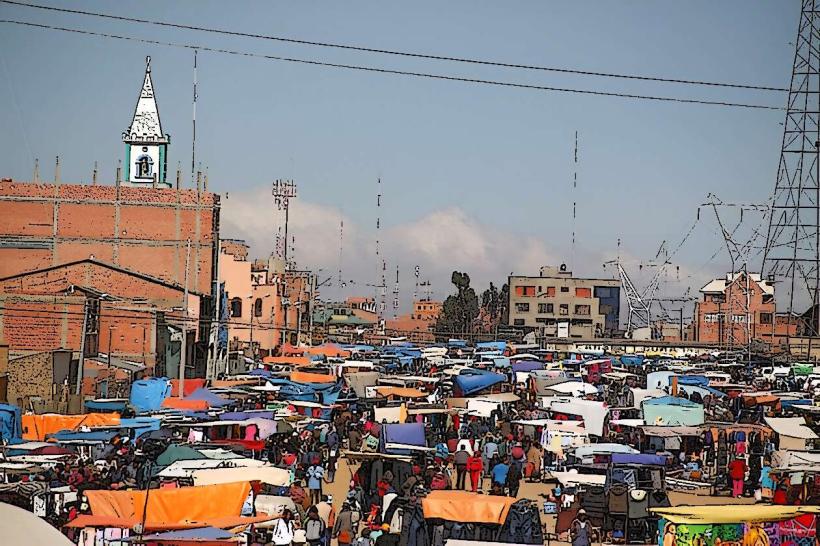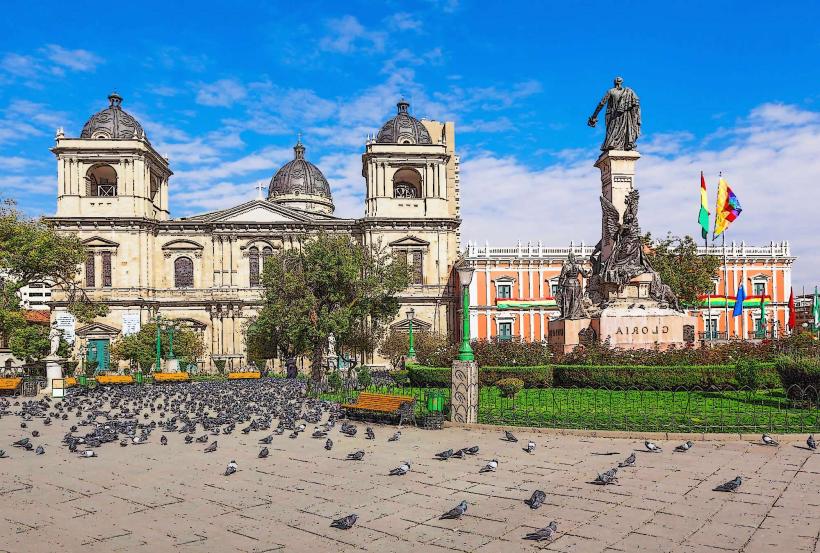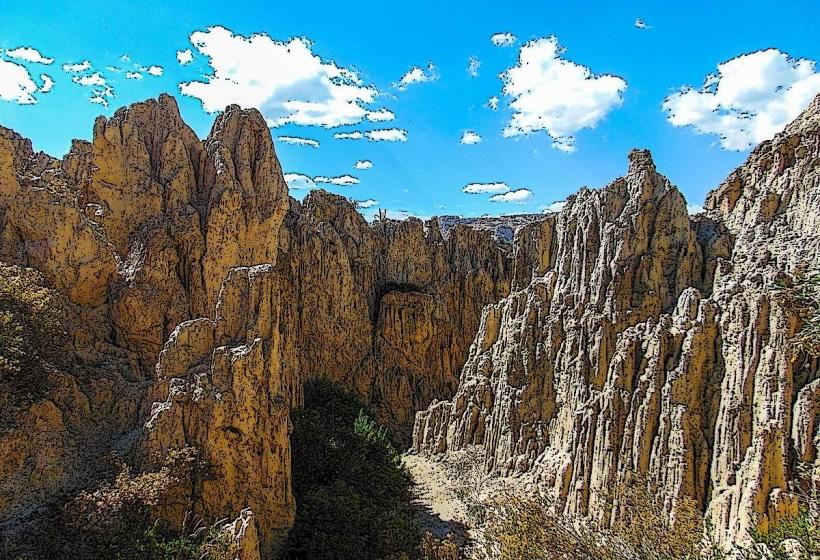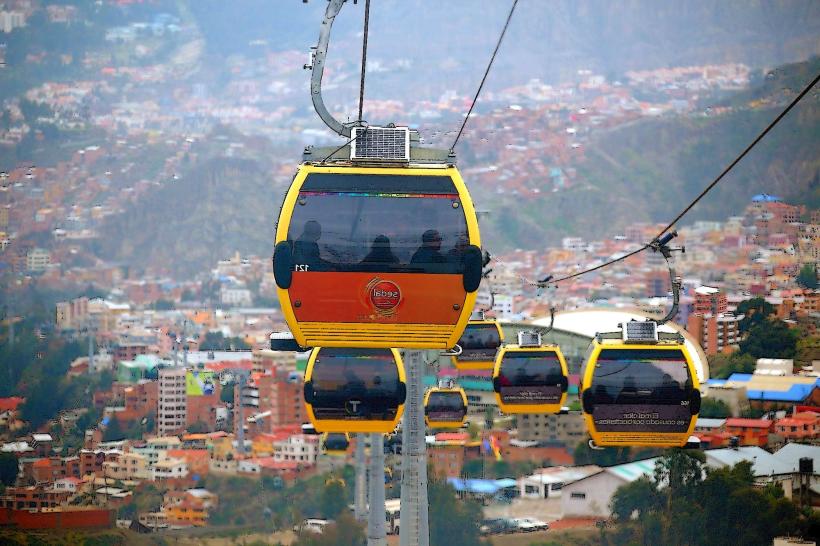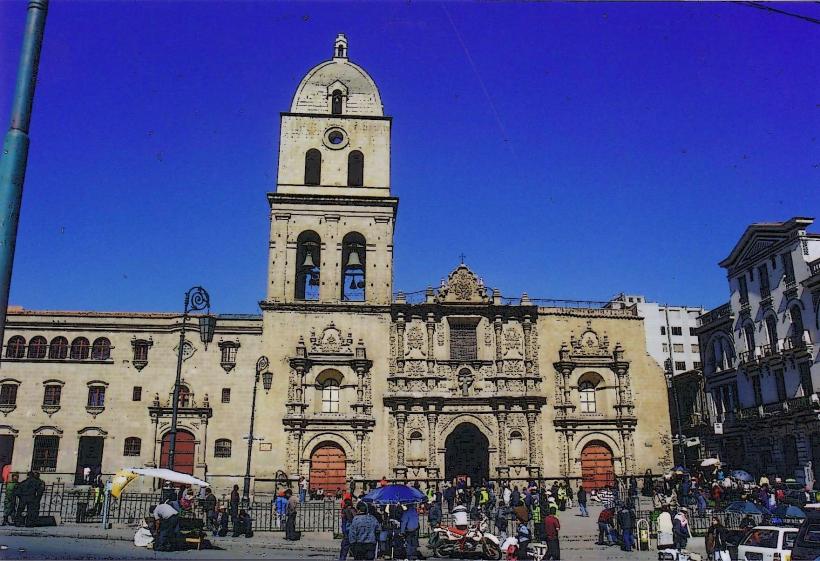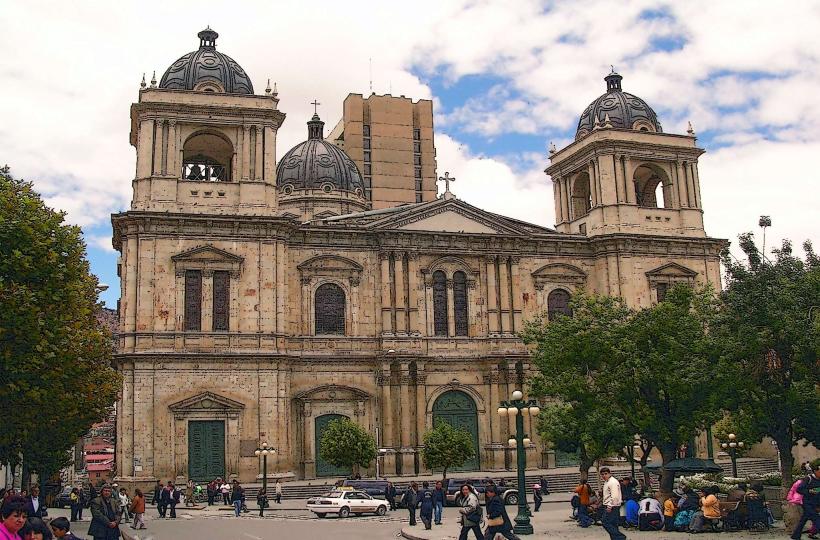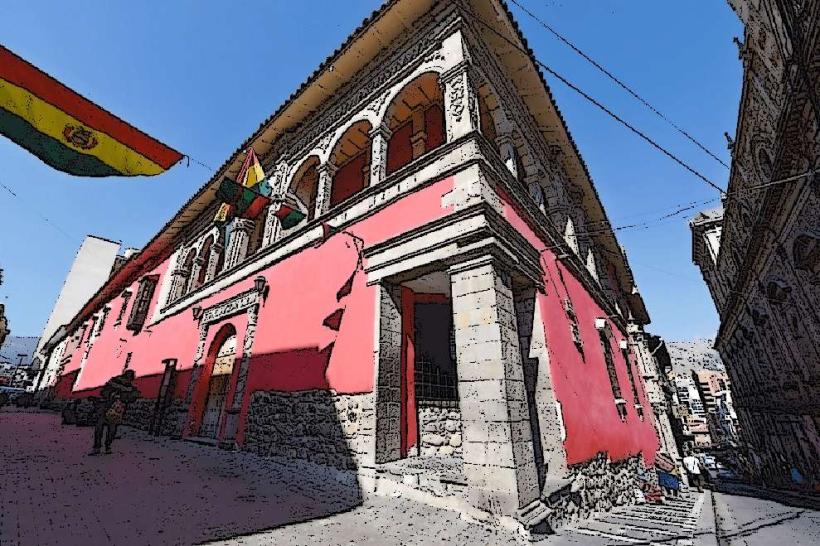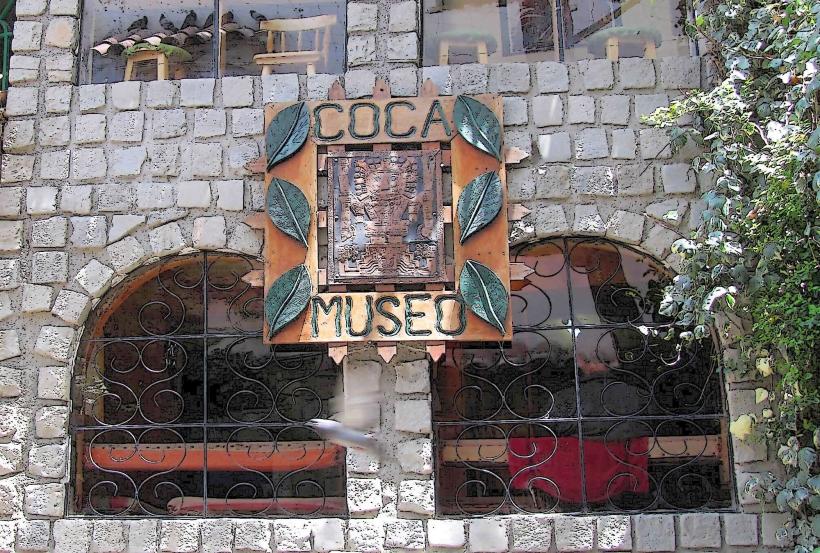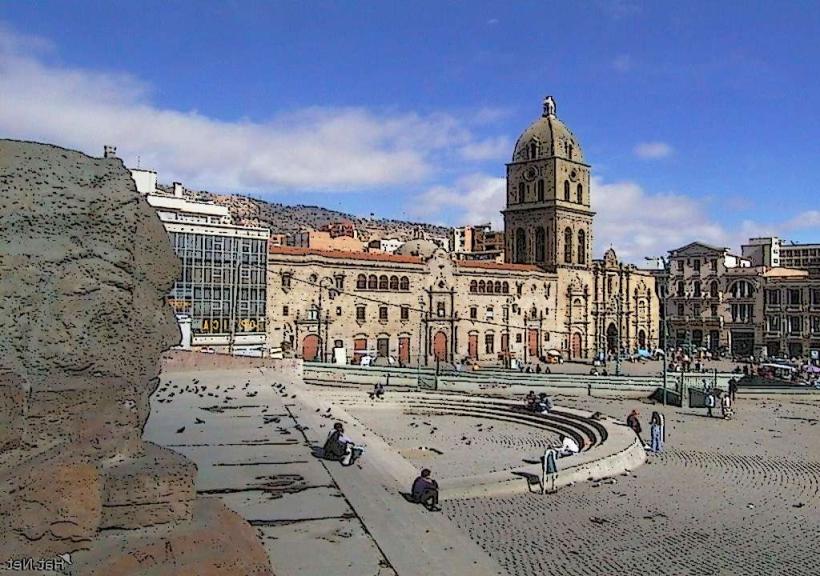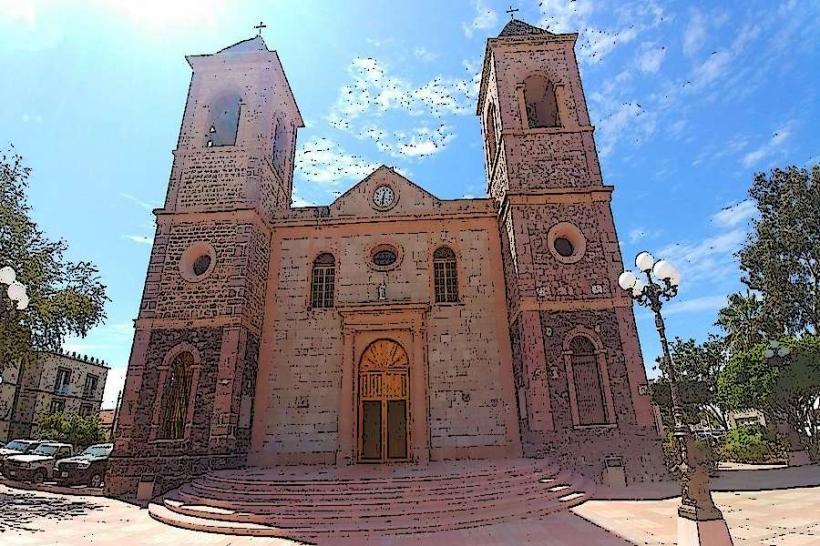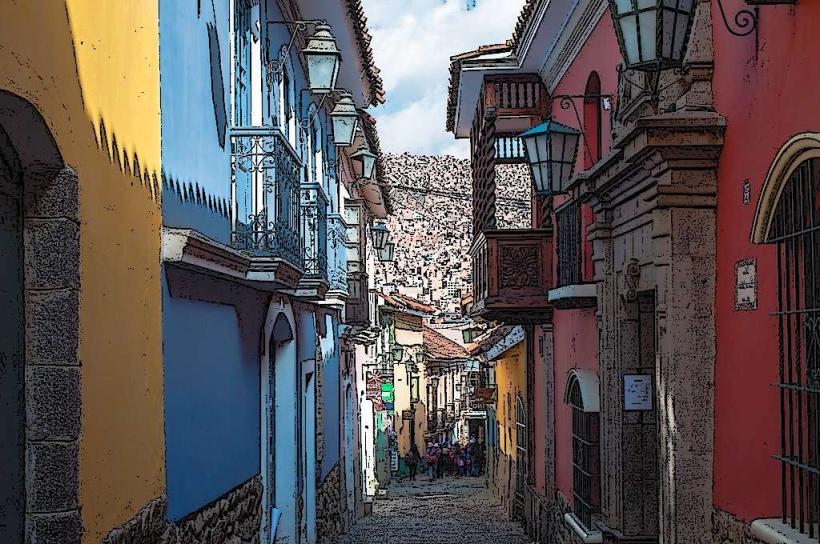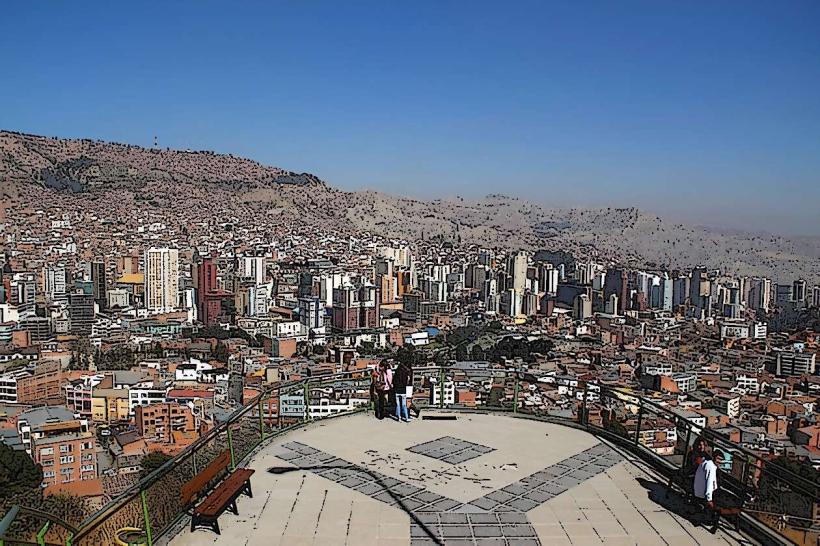Information
Landmark: Witches' Market (Mercado de las Brujas)City: La Paz
Country: Bolivia
Continent: South America
Witches' Market (Mercado de las Brujas), La Paz, Bolivia, South America
Overview
As it happens, In La Paz, Bolivia, the Witches’ Market-Mercado de las Brujas-buzzes with stalls of dried herbs and strange charms, making it one of the city’s most captivating and unusual sights, in addition it lets you peek into Bolivia’s living heritage-ancient indigenous traditions, vibrant spirituality, and mystical beliefs that still echo in mountain festivals and quiet village rituals.Right in the heart of the city, just steps from Plaza San Francisco, the market buzzes with color and life, meanwhile visitors wander past stalls stacked with fragrant bundles of sage, browse jars of herbal remedies, and discover charms meant to bring luck or ward off harm.The Mercado de las Brujas traces its origins to ancient Aymara and Quechua traditions, where the scent of dried herbs and the belief in a bridge between spirit and flesh have endured for centuries, furthermore these beliefs center on the idea that nature, spirits, and people are deeply linked, and that simple acts-like leaving fruit at a shrine or brewing a herbal tea-can help keep life in balance.Mind you, The market started to take form in the late 20th century, but its roots run deeper, back to days when people in La Paz and nearby villages crowded around stalls to buy fragrant herbs, colorful potions, and charms from curanderos and yatiris, equally important over time, the market transformed into a vibrant hub where the scent of fresh herbs mingles with the call of vendors, weaving Bolivia’s indigenous traditions into the pulse of its modern city life.From what I can see, The Witches’ Market twists into a maze of narrow stalls and tiny shops, each crammed with charms, herbs, and other goods tied to indigenous spirituality and traditional healing, while you might spot vendors with baskets of dried herbs, knotted roots, and fragrant flowers-each one rumored to carry a bit of healing power or spiritual significance.As it turns out, People use these items for all sorts of things-from easing a fever to keeping away the shadow of an unwelcome spirit, on top of that common herbs often include coca leaves, prized for their sharp, energizing lift, along with a variety of other plants long relied on in traditional medicine, not entirely Llama fetuses (Fetus de Llama) are perhaps the most striking sight for visitors, their compact, curled forms dried and preserved like something out of a desert dream, in addition in traditional Andean rituals, people offer these to Pachamama, or Mother Earth, especially during ceremonies like Ayni, a time of giving back-sometimes with cocoa leaves laid gently on the earth.People bury these fetuses in the earth as a symbolic gift, hoping for prosperity, a full harvest, or protection-like tucking a wish deep into the soil, in conjunction with many tourists find the sight startling, yet the rituals-smoke curling from clay pots-are woven deep into Andean cosmology.Vendors offer an array of spiritual tools-shiny brass talismans, carved wooden amulets, and other charms-each meant to invite good luck or ward off harm, on top of that they range from tiny charms-a palm-sized bronze cat or a carved figure of a god-to larger pieces designed to clear away bad energy or guard a home or shop, mildly Many of these tie back to Andean religious traditions, crafted to bring good luck or success in love, health, or money-like a tiny carved charm meant to guard the heart or fill the purse, after that magical Items for Rituals: Some visitors wander the market in search of candles, amulets, and other treasures for their ceremonies, a little These might be candles flickering in a dim room, incense curling through the air, and other ceremonial tools that spiritual guides use for healing or divination, subsequently the market also sells things tied to traditional offerings-dazzling swaths of fabric, sugar, and candies whose sweetness is said to delight the spirits.Handcrafted Goods: The market may center on spiritual and mystical items, but you’ll also spot handmade treasures-silver bracelets that catch the light, woven textiles, and smooth, earth-toned pottery, moreover handcrafted by indigenous artisans, these pieces showcase Bolivia’s vibrant cultural heritage and give visitors a chance to take home something traditional, like a brightly woven alpaca scarf.The Witches’ Market isn’t just a stop for curious tourists-it’s woven into the daily lives of many Bolivians, especially those who still light candles or offer herbs to honor their traditional beliefs, along with spiritual guides, curanderos, and yatiris wander through the market stalls, picking up herbs, candles, and other essentials they’ll use in rituals or to help people in the community.For many Bolivians, the market isn’t just for buying food-it’s where you might ask a vendor for advice about a troubled marriage or pause to light incense for guidance through hard times, while the market sits at the heart of many Indigenous communities, where people still honor Pachamama, nature spirits, and the rhythms of the cosmos-sometimes with a handful of coca leaves laid gently on the earth.These traditions take on special meaning during major cultural events like Pachamama Day on August 1, when people lay out food, flowers, and coca leaves to honor her and ask for blessings and good fortune, consequently at the Witches’ Market, visitors step into a swirl of color, spice, and murmured bargains-it’s as lively as it is unforgettable.The air is thick with the scent of herbs, incense, and warm candle wax, while dazzling arrays of spiritual trinkets and handmade treasures draw your gaze, at the same time the market bustles with locals haggling over a few coins for fresh peppers, while tourists wander through stalls, chasing the allure of Andean spirituality.For many tourists, seeing mysticism woven into Bolivia’s daily life feels like stepping into another world-an vintage woman burning incense at dawn, shopkeepers whispering blessings over fresh fruit, therefore it might surprise some people-or even make them uneasy-but the market still hums with the timeworn traditions that shape Bolivian culture, from the scent of fresh herbs to the chatter of vendors.Over the years, the Mercado de las Brujas-its stalls piled high with dried herbs and tiny carved charms-has grown into one of La Paz’s most popular stops for visitors, simultaneously the market’s allure pulls in crowds, eager to witness the ancient chants and rituals still alive in the city’s bustling heart.Still, the market struggles with commercialization; the steady stream of tourists has some locals worrying that the smell of fresh herbs and the rhythm of antique songs could fade along with the authenticity of their traditions, not only that even so, the Witches’ Market still anchors La Paz’s cultural and spiritual life, its stalls piled with dried herbs and carved charms that open a glimpse into Bolivia’s indigenous past and the traditions that still pulse through the city today.In conclusion, the Witches’ Market in La Paz brims with color and intrigue, inviting visitors to step into Bolivia’s mystical and spiritual traditions, from bundles of dried herbs to the smoky scent of burning incense, therefore it offers a rare glimpse into where indigenous beliefs meet herbal cures and age-vintage Andean rituals, revealing how deeply the people of Bolivia are tied to the mountains and earth beneath their feet.Whether you’re drawn to the spiritual, curious about history, or just chasing something strange, the Witches’ Market pulls you in with its winding stalls and the faint scent of burning incense.
Author: Tourist Landmarks
Date: 2025-09-18


